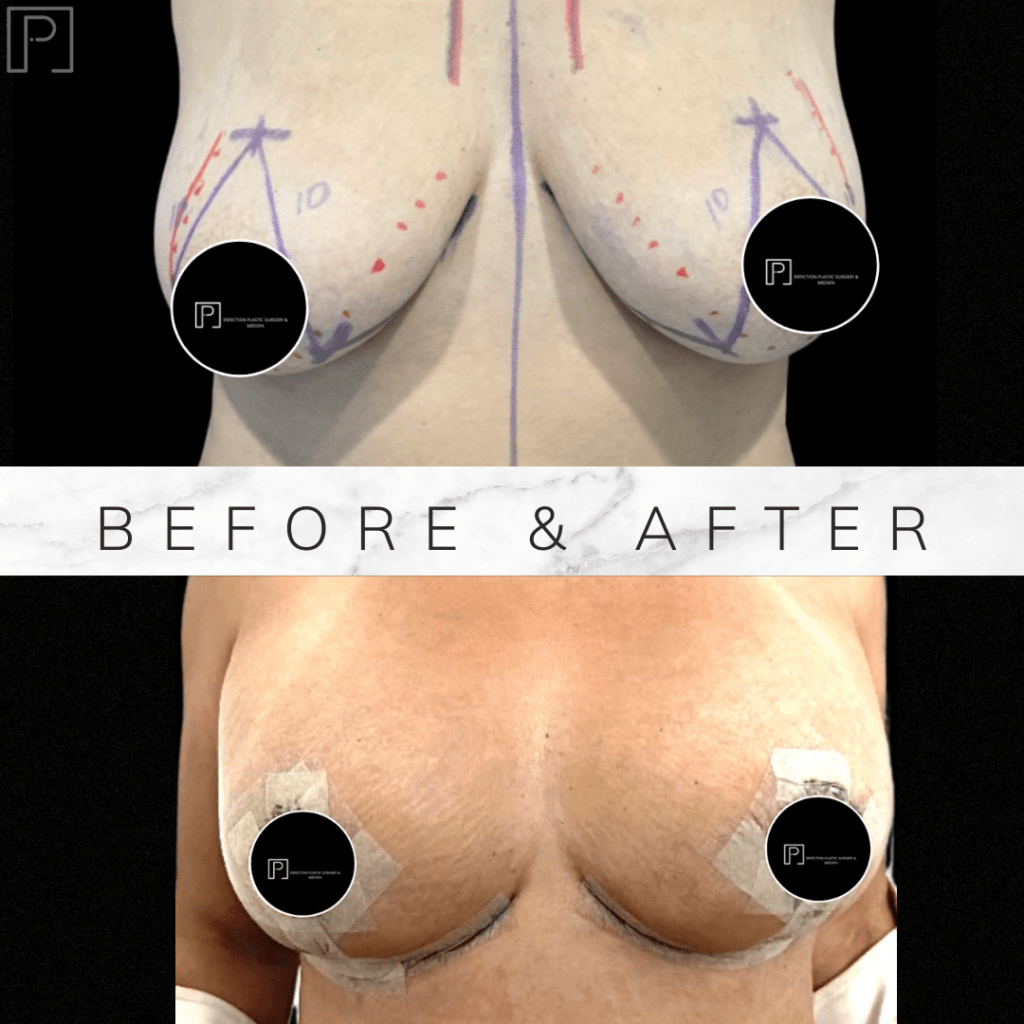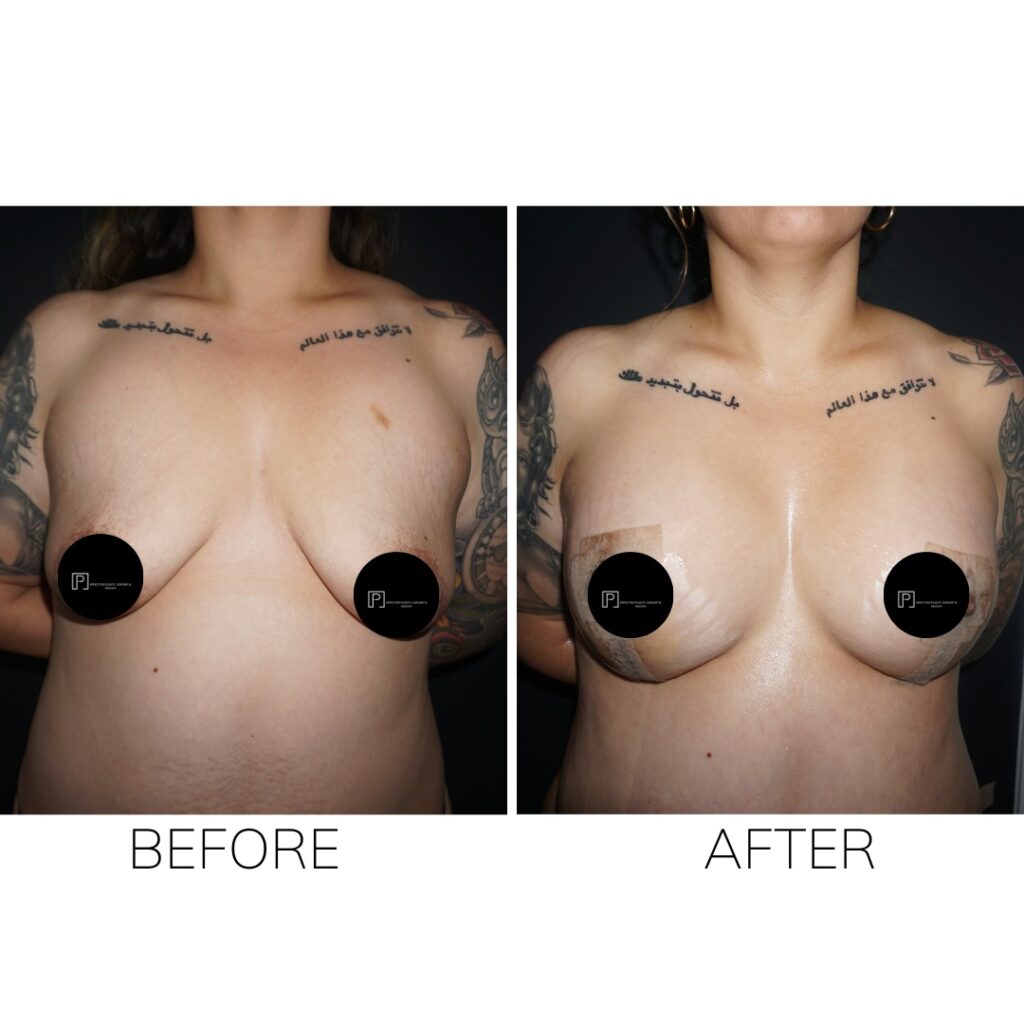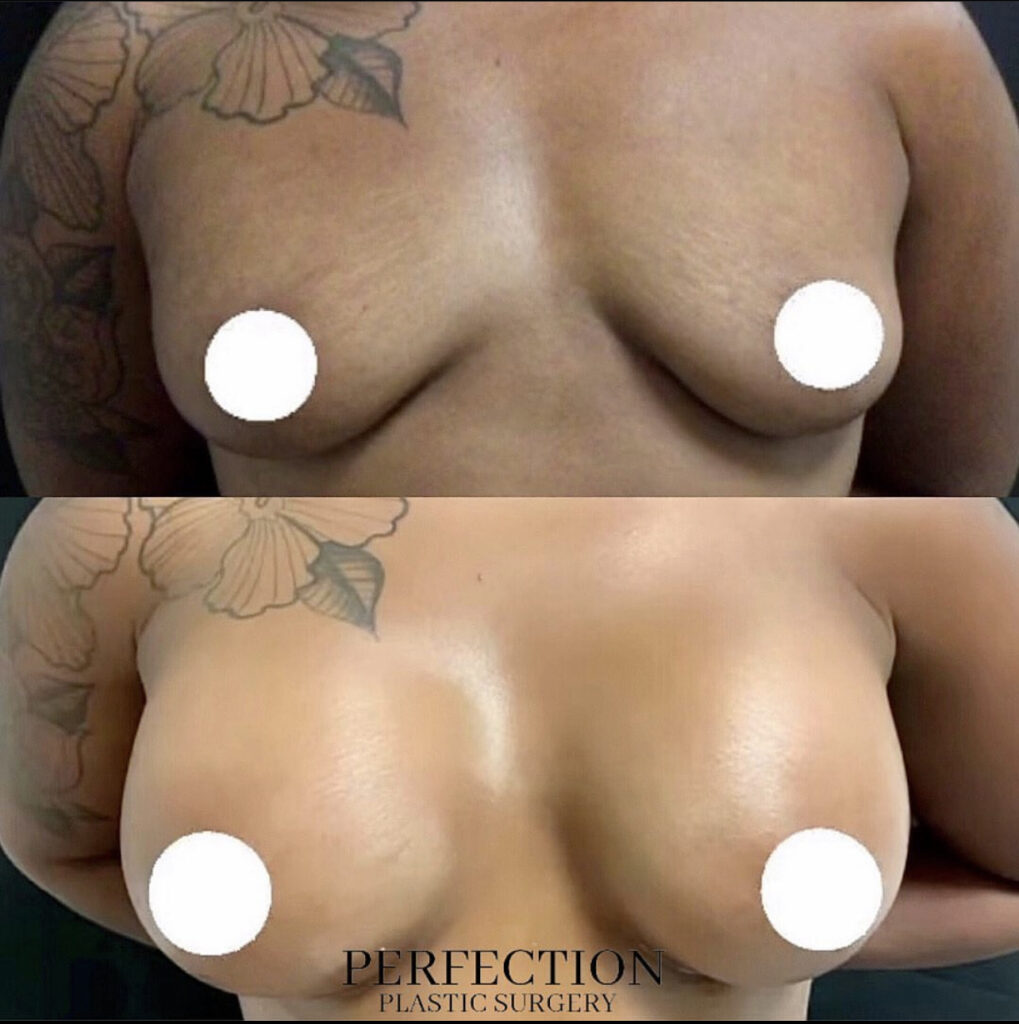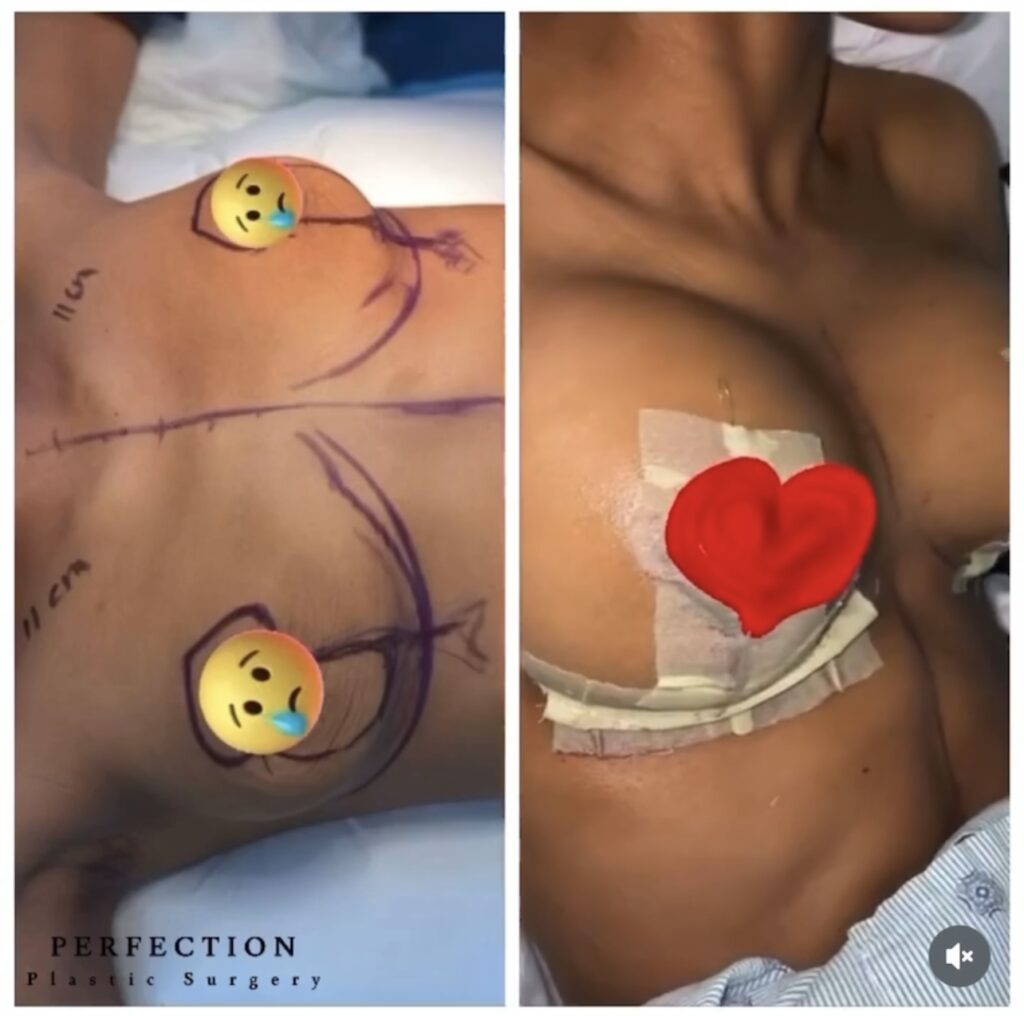
Augmentation, Reduction or Reshaping the appearance of the breast.
Mammoplasty is a general term that covers a set of surgeries aimed at reducing, augmenting, lifting or reconstructing the breasts. Augmentation mammoplasty normally involves the placement of breast implants, although there are techniques for fat transfer to the breasts. Reductive mammoplasty allows you to reduce volume, but also improve shape, mastopexy focuses on firming and repositioning tissues.
Reconstructive mammoplasties are performed when the breasts have been partially or totally lost, generally post mastectomy in cancer treatment or when it is necessary to correct sequelae of complicated surgeries.
AUGMENTATION MAMMOPLASTY: BREAST AUGMENTATION/ IMPLANTS
It is performed in order to increase the volume, increase projection and improve the shape of the breasts, by placing prostheses or breast implants, generally behind the pectoralis major muscle.
The most common approaches are the areolar, submammary, and axillary. Although they can also be placed through the navel or from the abdomen during a dermolipectomy. It is the most requested and performed cosmetic surgery worldwide since it causes great satisfaction and significantly improves female self-esteem.
The type of mammoplasty depends on the characteristics of the patient’s breasts, mainly the degree of ptosis (breast drooping). The incision is usually small along the edge of the areola or the breast fold. In sagging breasts, firming (mastopexy) is required, in which case the wound can be a circle, a vertical, a J, or an inverted T.
The ideal candidates are women with little or no breast development, significant asymmetries, adequate weight for their height, and discomfort due to their appearance.
Patients with tuberous breasts (tubular deformity) or those whose breasts have fallen due to pregnancy or significant weight changes can also be operated on, however, women with large breasts should first undergo breast reduction to achieve the expected goal.
There is a wide variety of breast implants whose characteristics will determine the final appearance of the breast. This range ranges from small prostheses (200 to 300cc) with anatomical characteristics to round implants with extra-high profiles and large volumes (800 to 1000cc). Recent trends point to the use of moderate volumes that provide a proportioned and natural look. The most recognized brands are: Polytech, Allergan (Natrelle-CUI), Sebbin, Motiva, Eurosilicone, Johnson&Johnson (MENTOR-McGHAN), Silimed, Nagor and Perthese. Modern prostheses are made of a dimethylpolysiloxane elastomer in the form of a solid gel (highly cohesive or “gummy bear implants”), their duration could exceed 30 years and they have guarantees of 10 years and more.
Most of the patients recover in a week enough to do office work or university activities, they may have muscle pain for 3 to 4 days. The first stitches are removed after 10 days and contrary to what many think, they can travel by plane at the end of their postoperative checkups.
BREAST LIFT OR MASTOPEXY
Breast Firming or Lifting – The purpose of this procedure is to lift and reposition sagging breasts as a result of age, pregnancy, lactation or drastic weight changes.
Breast pexies have in common the upward displacement of the areolas and nipples, elimination of excess skin, correction of asymmetries and discreet reduction of the breasts. To perform them, an incision must be made around the areola and another below the breast in the shape of a “J” or “T”, the length of the wound depends on the degree of ptosis (droop).
Candidates for this surgery are those women with or without children who present unsightly descent of their breasts, deformity or breast asymmetries, sequelae of previous interventions, weight loss due to bariatric surgery, postpartum changes and even patients with implants whose breasts have descended.
It is a good option for those who wish to suspend their breasts while preserving their natural appearance or as a first stage to correct asymmetry and descent before placing breast implants.
The postoperative period is not painful, but it does require care. Patients should avoid lifting and driving for the first month. They can do office work 10 to 12 days after surgery and could travel when they are one month old. The ability to breastfeed is not lost.
REDUCTIVE MAMMOPLASTY: BREAST REDUCTION
It allows to reduce the size of the breasts and correct their fall. Mammary hypertrophy (excessive size and weight of the breasts) can occur from puberty (juvenile gigantomastia) and become a dramatic problem that is as traumatizing as or more than the lack of development of the mammary gland. In addition to the aesthetic issue, the patients suffer severe pain in the neck and back, difficulties exercising and even relationship problems.
There are various reductive mammoplasty techniques, which allow the removal of up to 50% of the breast tissue. In most, the incision is shaped like a “J” or “T” in the lower part of the breast. Although these scars are evident, patients are quite grateful when their symptoms are gone with an evident improvement in their quality of life.
Any woman with symptoms derived from the exaggerated volume of her breasts is a candidate for this procedure, however, patients must be very clear in their expectations since the aesthetic result will never be like that of breast implants. I do not recommend doing this surgery simultaneously with the placement of a breast prosthesis since the reduction would not be effective.
The postoperative period is not painful, but it does require care. Patients should avoid lifting and driving for the first month. They can do office work 10 to 12 days after surgery and could travel when they are one month old. The ability to breastfeed is not lost, although milk production decreases. Nipple sensitivity may be altered.
GYNECOMASTIA SURGERY: MALE BREAST REDUCTION
Enlarged breasts can cause significant embarrassment that lowers a man’s self-esteem. Gynecomastia surgery provides a more masculine appearance to improve a man’s confidence and self-esteem. Male breast reduction is a surgical procedure designed to remove enlarged breast tissue in males, known as “gynecomastia.” The presence of excess fat in the man boobs can prevent men from achieving the firm, toned chest they desire. Gynecomastia surgery removes these “man boobs” to produce more attractive chest contours, and this is one of the most common plastic surgeries performed on men.
Common features of gynecomastia include:
* Fat deposits located in the chest area.
* Excess glandular tissue.
* Excess breast skin.
How is gynecomastia treated?
When gynecomastia is primarily the result of excess fatty tissue in the chest area, liposuction is usually performed to permanently remove these fat cells. After making small incisions in the folds under the breasts, a cannula (thin hollow tube) is inserted under the skin to suction out unwanted fat deposits. When the gynecomastia is more extensive, the breast skin and glandular tissue may also be removed.
Common Reasons to Have Man Breast Reduction
restore trust






